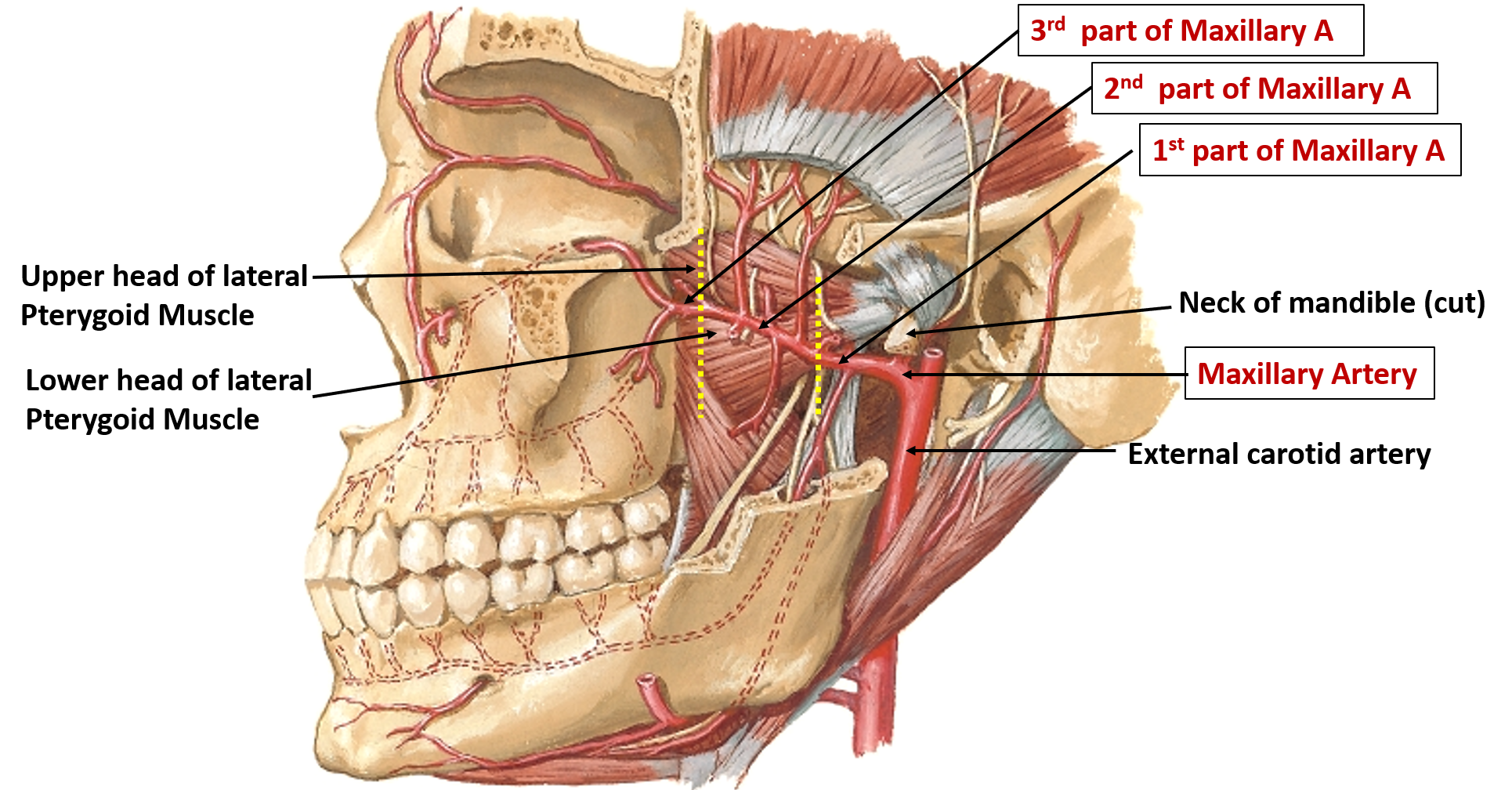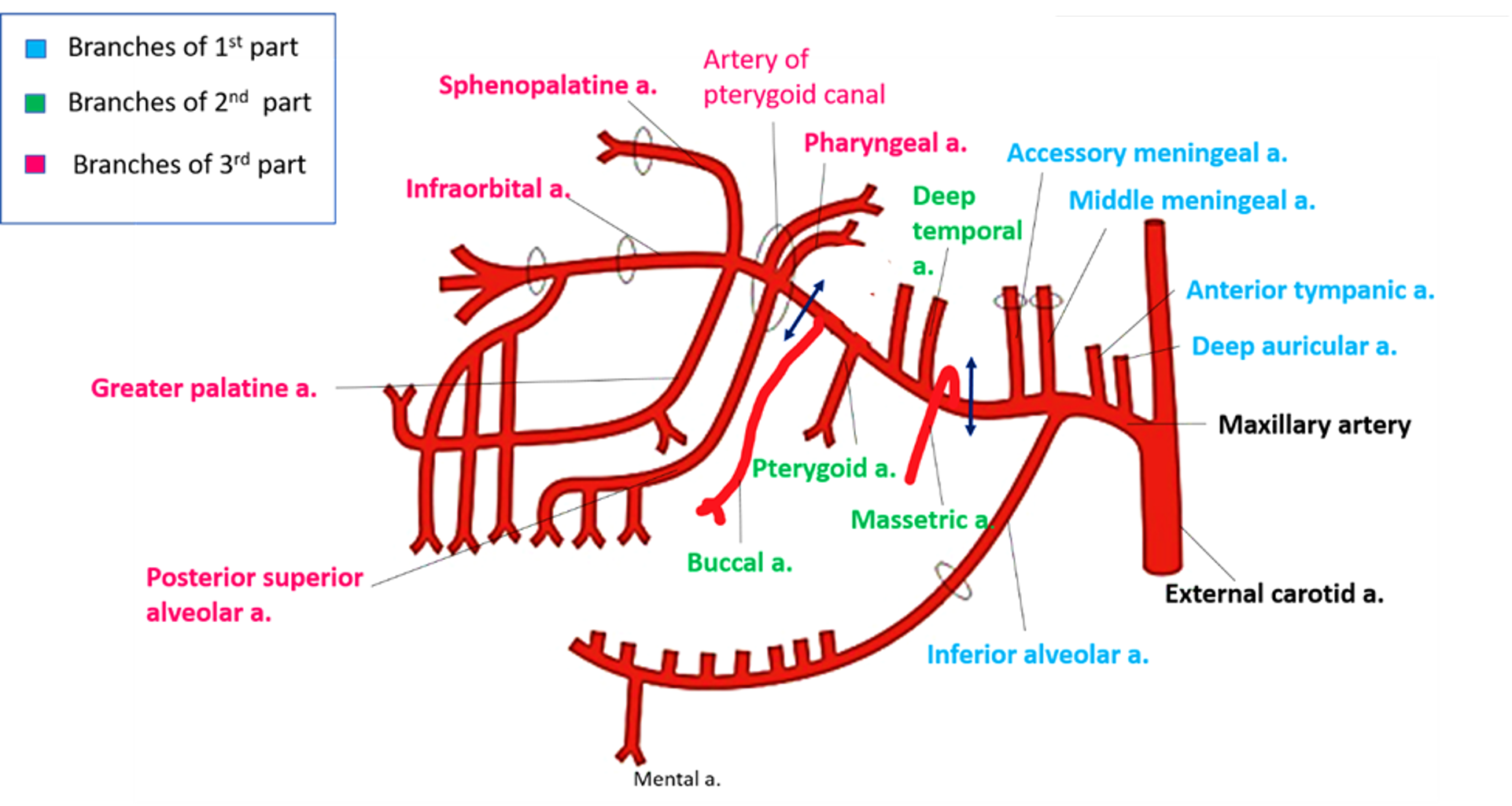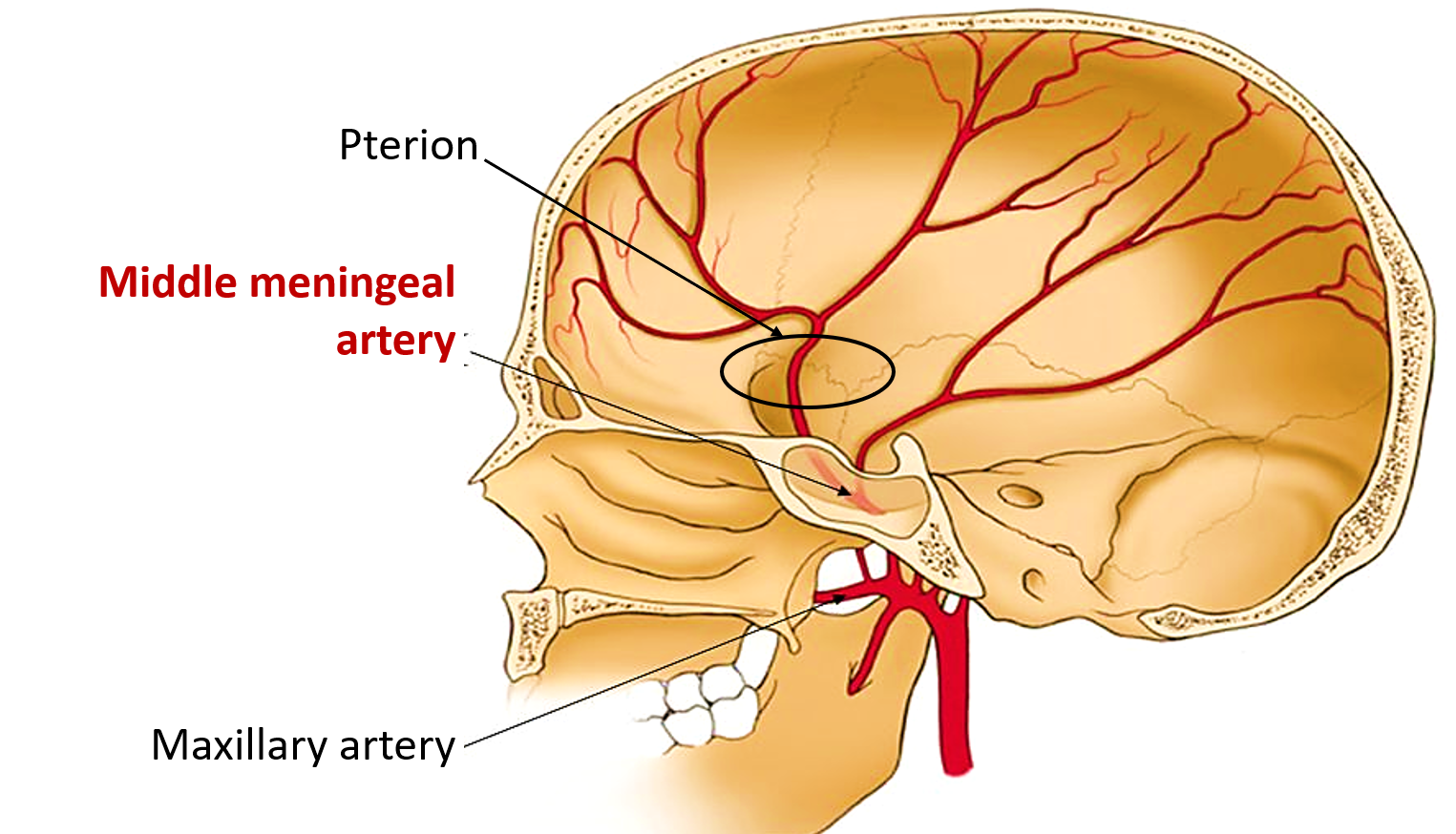Origin of Maxillary Artery
Maxillary artery is the larger of the two terminal branches of external carotid artery. The other terminal branch is superficial temporal artery.
Origin: Maxillary artery arises behind the neck of the mandible from the external carotid artery.
Course of Maxillary Artery
- It begins behind the neck of mandible and runs horizontally forward up to the lower border of lower head of lateral pterygoid muscle.
- It then turns upwards and forwards and crosses the lower head of lateral pterygoid muscle superficially (occasionally passes deep to the muscle).
- It emerges between the two heads of lateral pterygoid muscle and enters the pterygopalatine fossa by passing through the pterygomaxillary fissure .
- Here it ends by giving its terminal branches.

Parts of Maxillary Artery
Maxillary artery is divided into three parts by the lower head of lateral pterygoid muscle (see the above picture).
- First part (mandibular part): It extends from the neck of the mandible to the sphenomandibular ligament. Runs along the lower border of lateral pterygoid muscle.
- Second part (pterygoid part): It runs upwards and forwards either superficial or deep to the lower head of the lateral pterygoid muscle.
- Third part (pterygopalatine part): It passes between the two heads of lateral pterygoid muscle and the enters pterygopalatine fossa by passing through the pterygo-maxillary fissure.
The 1st and 2nd part of maxillary artery lie in the infratemporal fossa and 3rd part in pterygopalatine fossa.
Branches of Maxillary artery
It gives total15 branches.
Branches of First part
- It gives following five branches:
- Deep auricular
- Anterior tympanic
- Middle meningeal.
- Accessory middle meningeal
- Inferior alveolar
Branches of Second part
- It gives following four branches.
- Deep temporal
- Pterygoid branch
- Masseteric artery
- Buccal artery
Branches of Third part
- It gives following six branches:
- Posterior superior alveolar
- Infraorbital
- Greater palatine
- Sphenopalatine
- Pharyngeal
- Artery of pterygoid canal
Branches of 1st and 2nd part of maxillary artery follow the branches of mandibular nerve and those of 3rd part follow the branches of maxillary nerve.

Distribution/Structures Supplied by Maxillary Artery
The maxillary artery supplies:
- Upper and lower jaw with teeth.
- Muscles of mastication (temporalis, medial and lateral pterygoid, and masseter)
- Nasal cavity
- Maxillary air sinus
- Palate
- Nasopharynx
- External and middle ear
- Auditory tube
- Duramater
Applied Aspect
Middle meningeal artery is clinically the most important branch of maxillary artery. The artery enters the cranial cavity through foramen spinosum and divides into anterior and posterior branches. The anterior branch passés upward and forward to pterion and then turns backward and ascends over precentral gyrus of cerebrum) towards the vertex. The artery and its branches are extradural.

Following a blow on the pterion region, the anterior branch of middle meningeal artery is often torn resulting in formation of extradural hematoma which may compress the motor area (precentral gyrus) of cerebral cortex leading to paralysis of opposite half of the body.

Amazing
Amazing website! made anatomy super easy